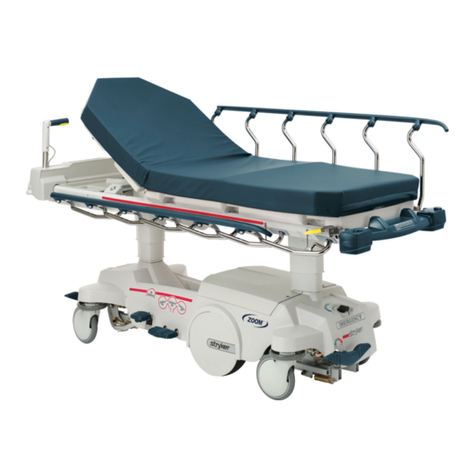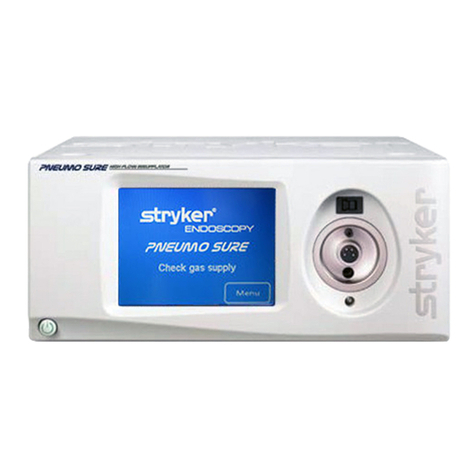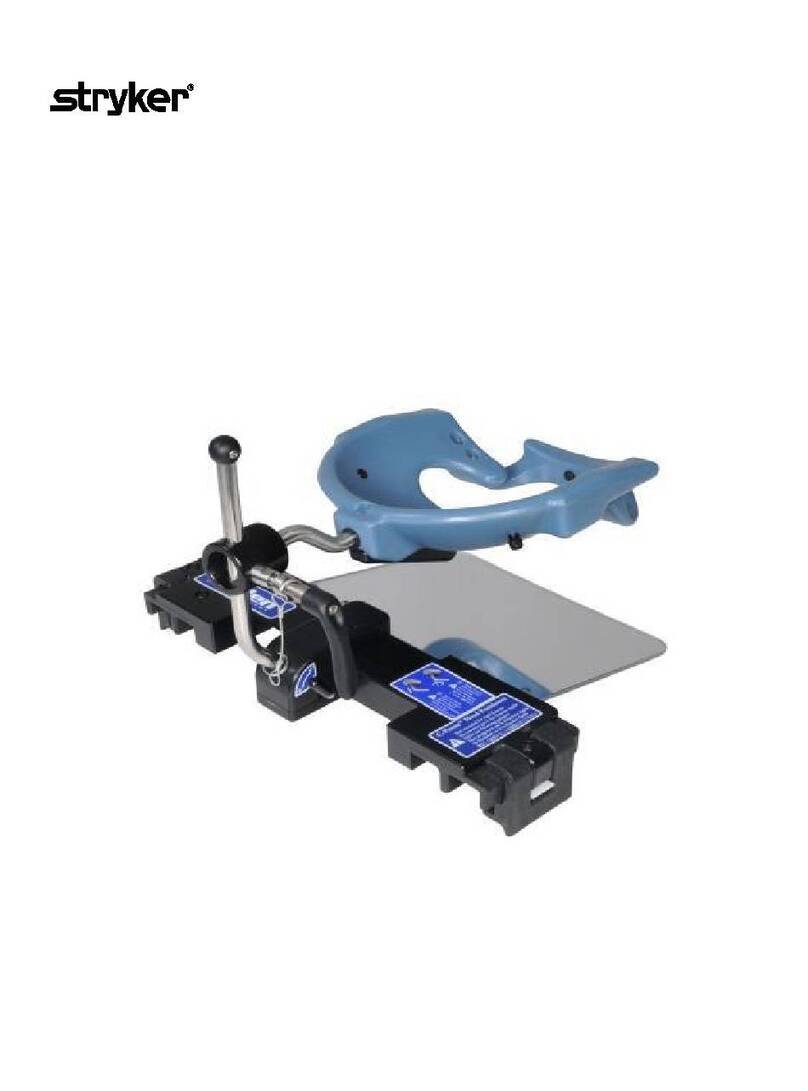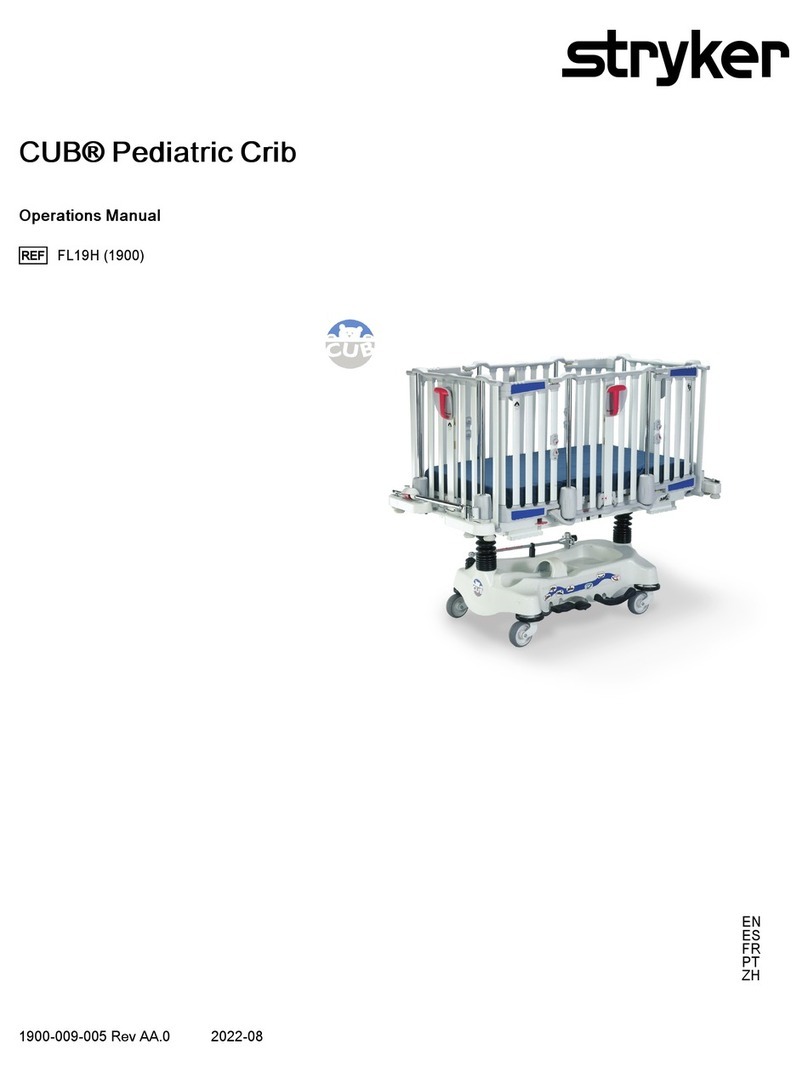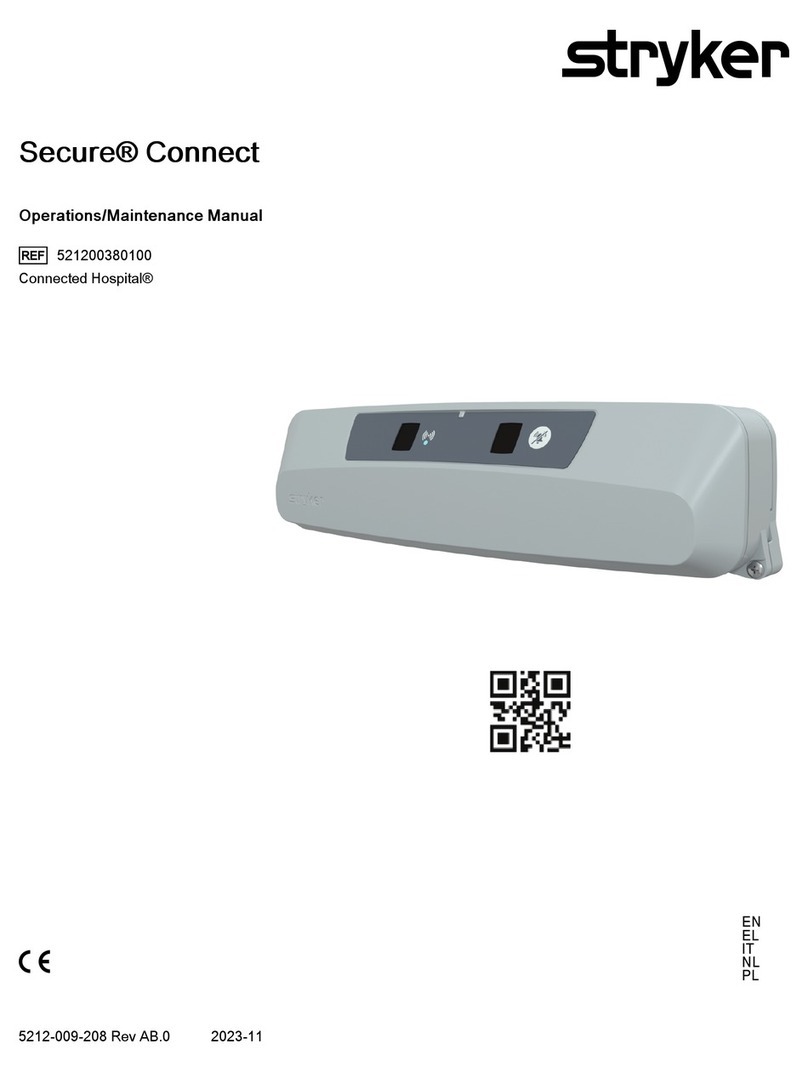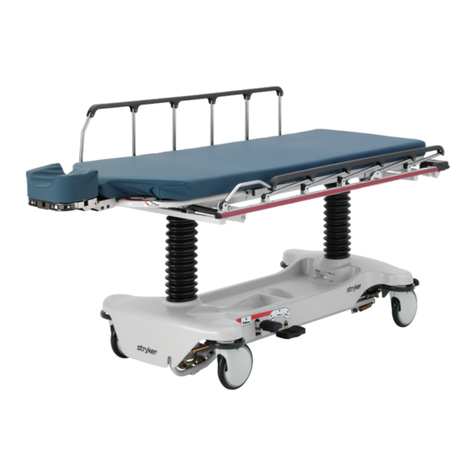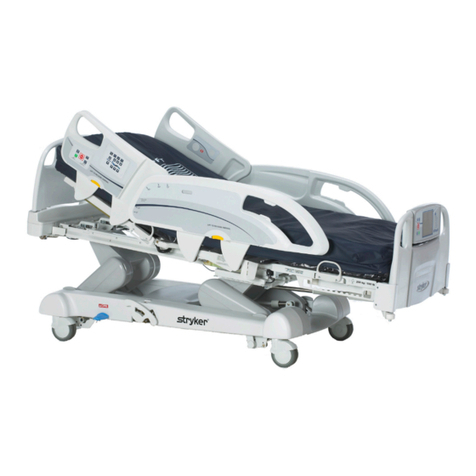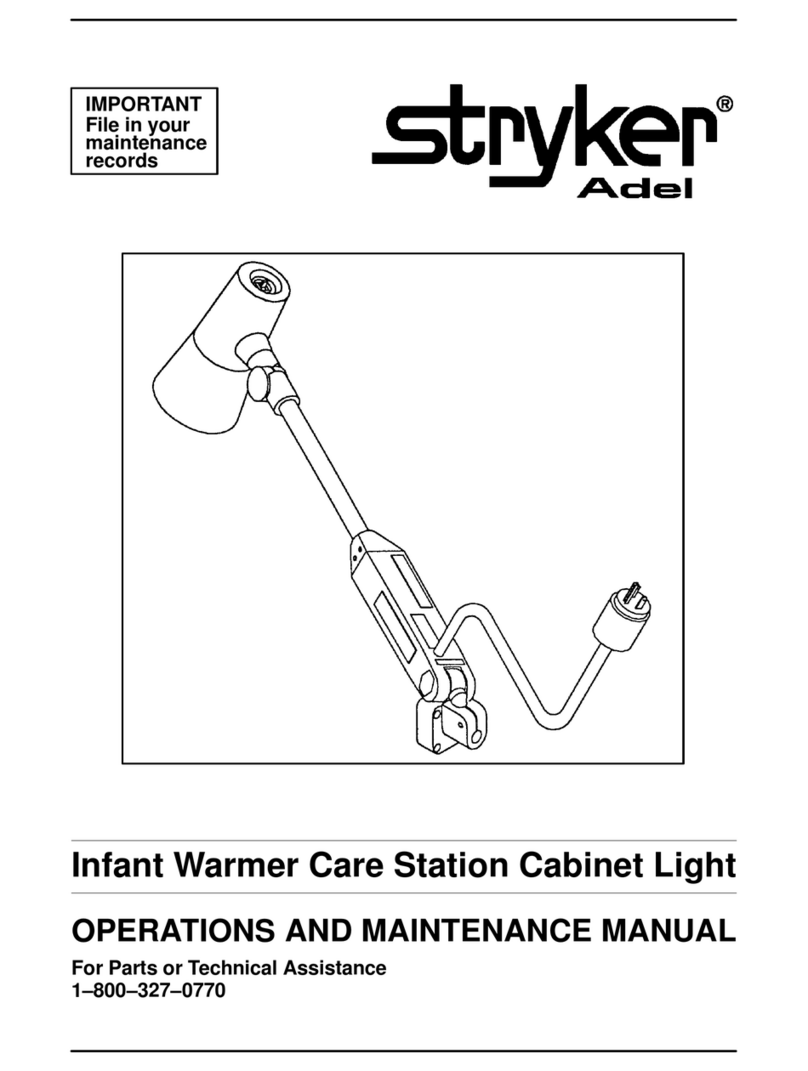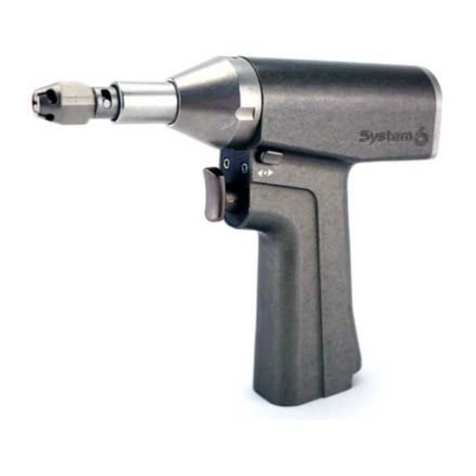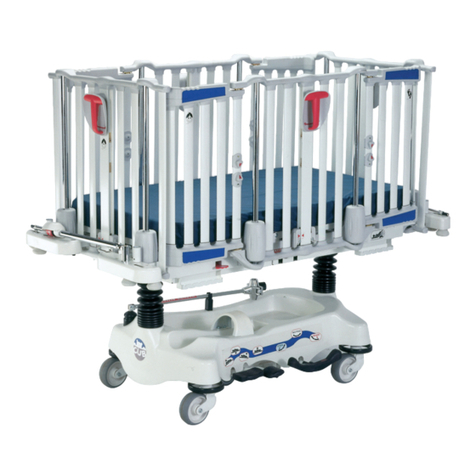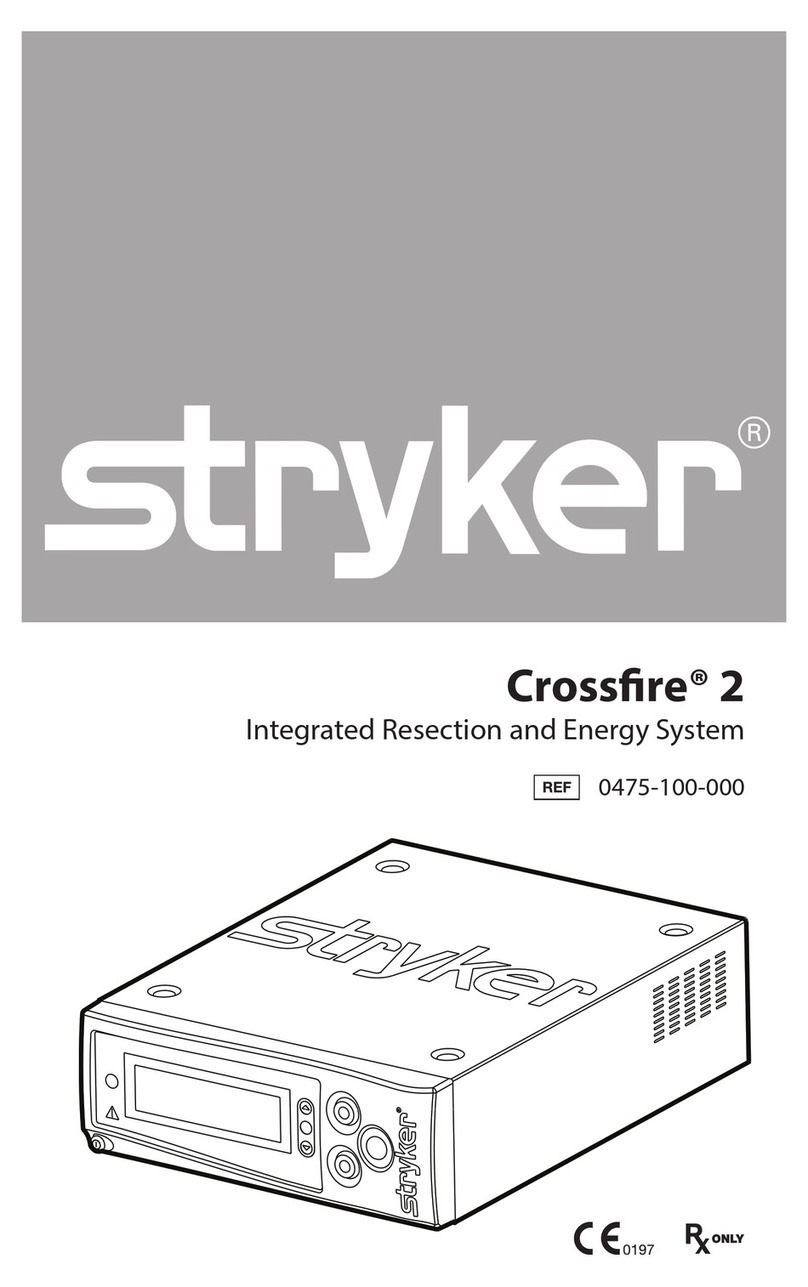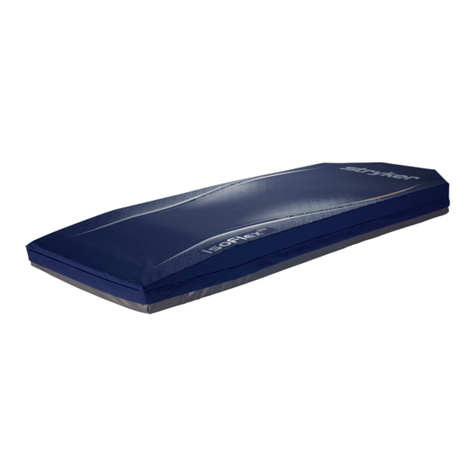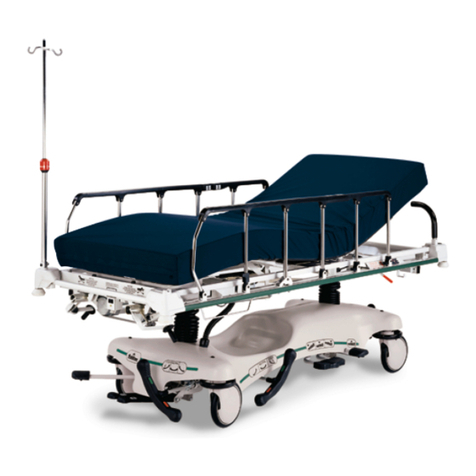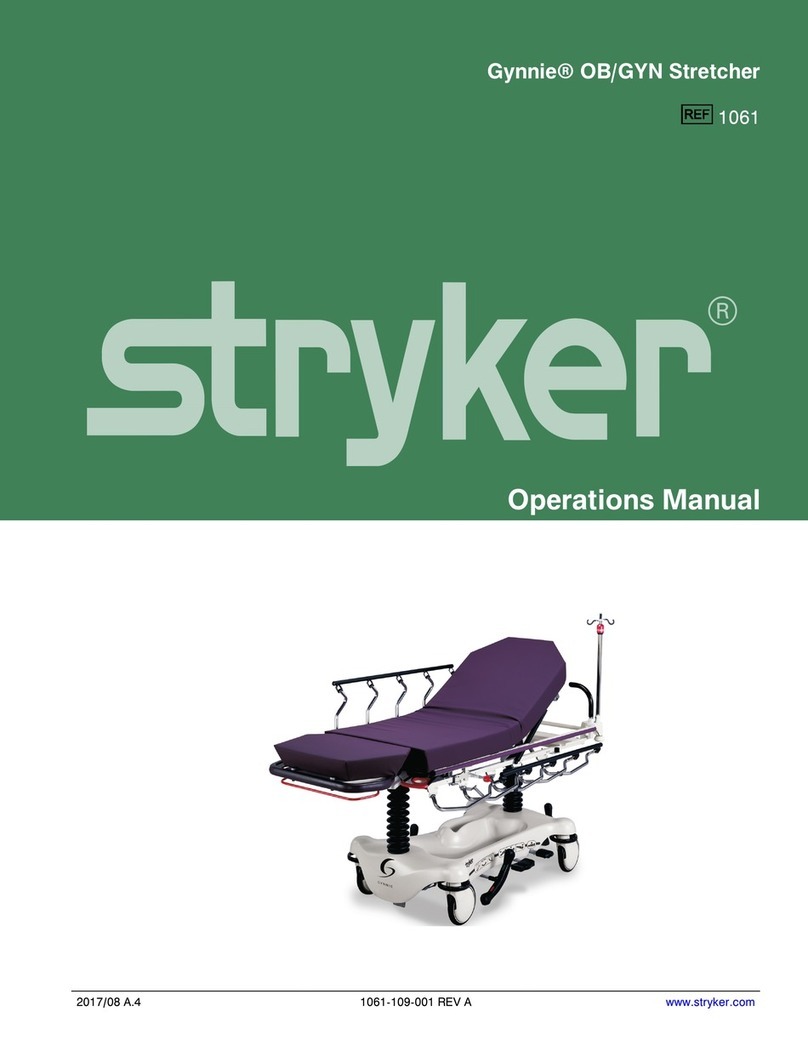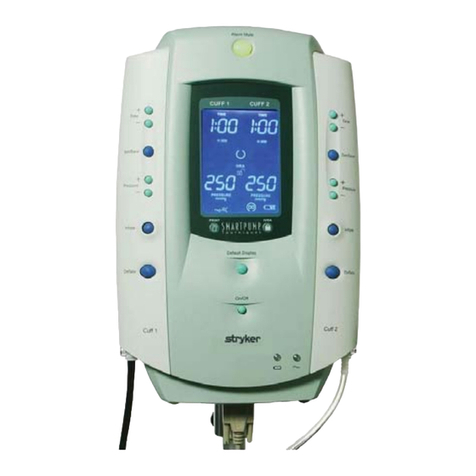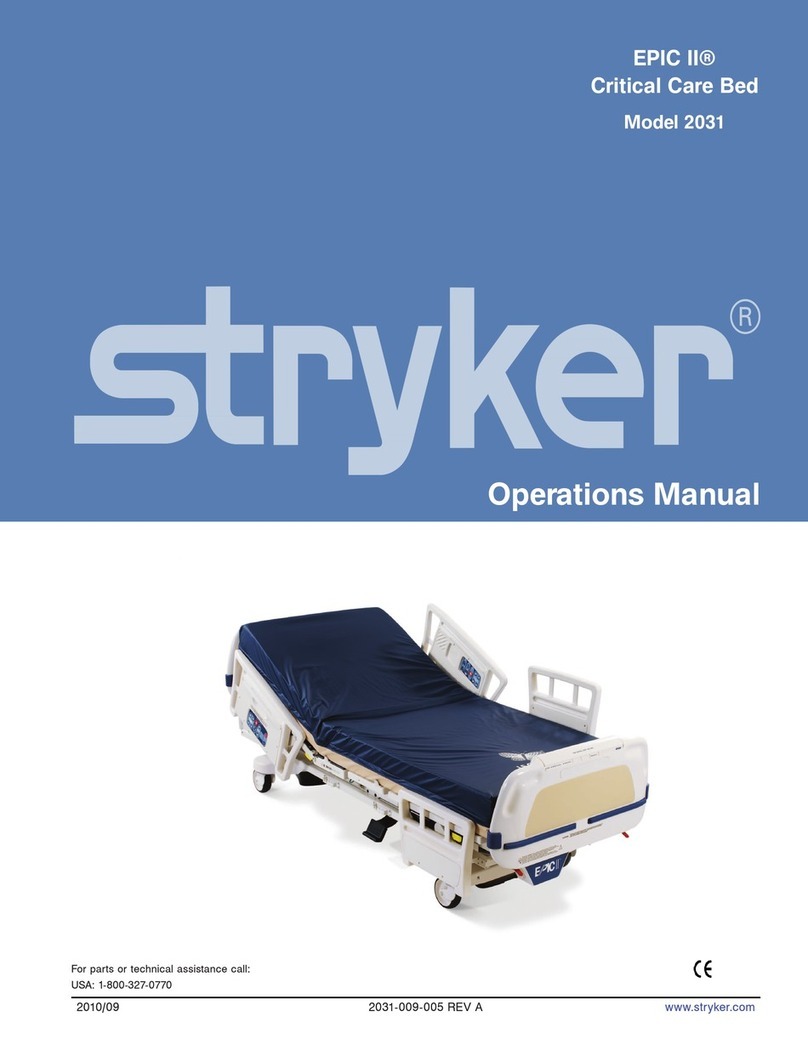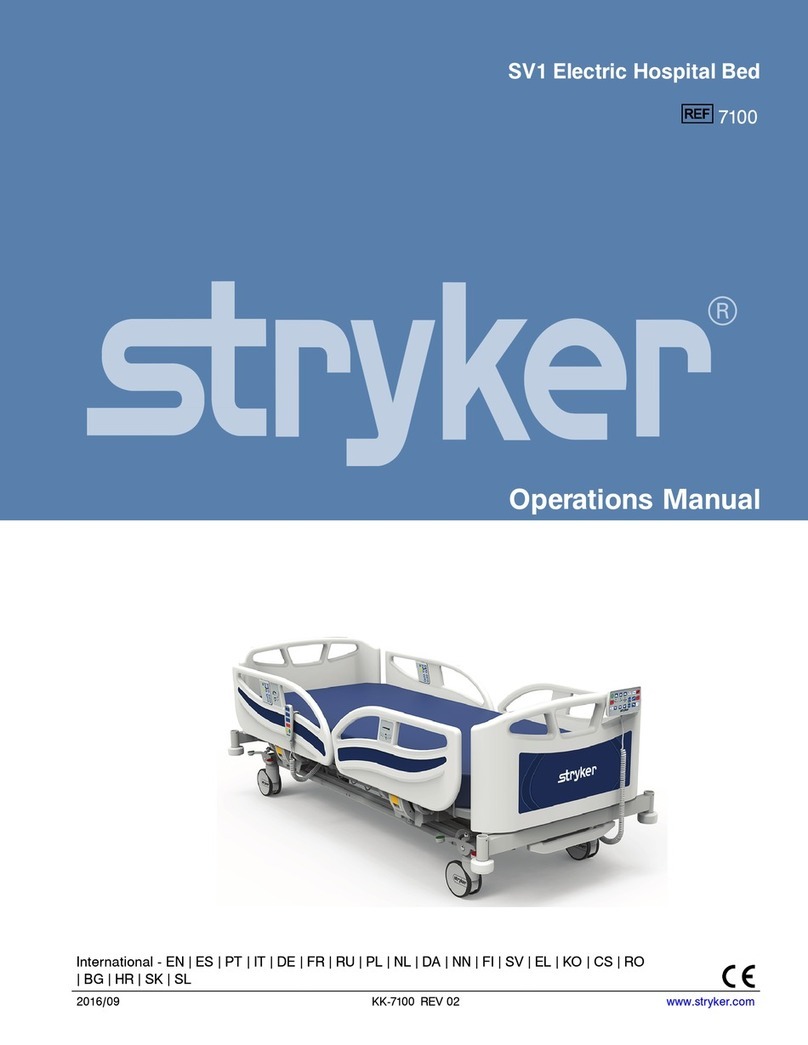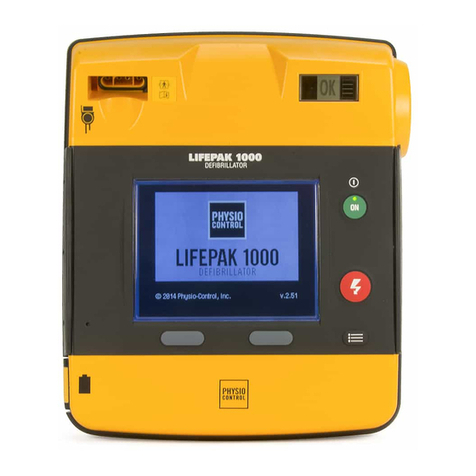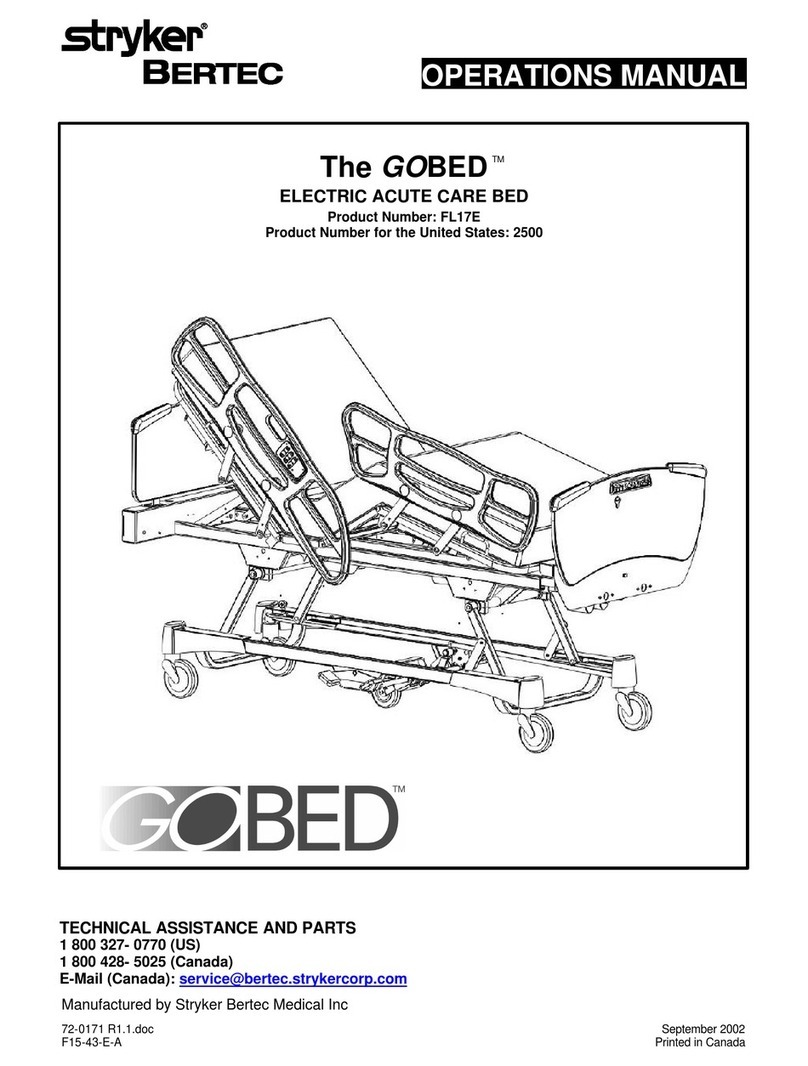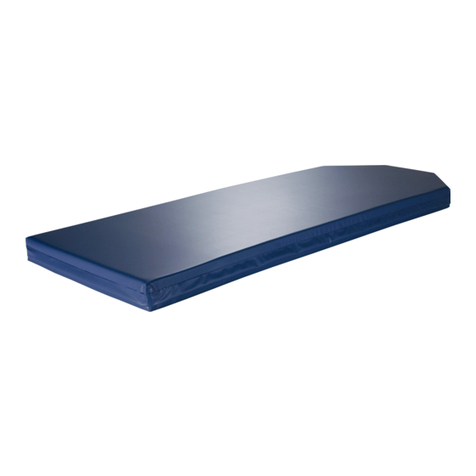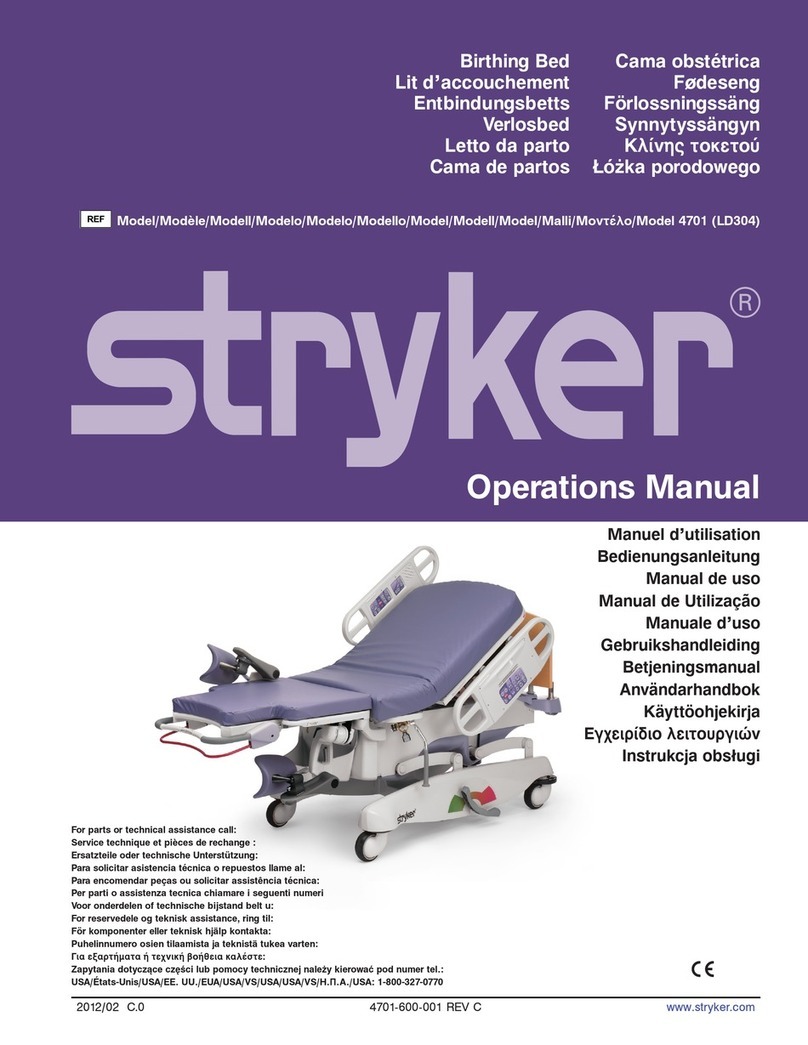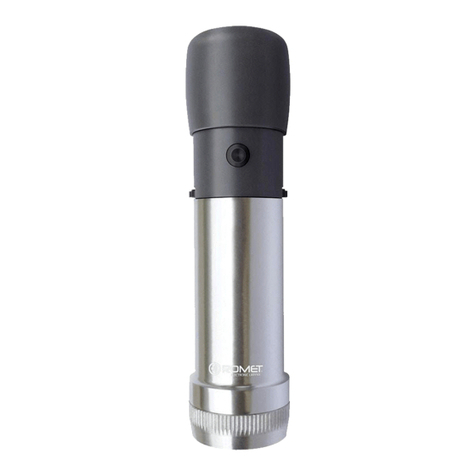
www.stryker.com 2040-309-002 REV B 5
Table of Contents
Optional ZOOM® Drive Train Assembly..................................................... 114
Optional ZOOM® Battery Tray Assembly.................................................... 115
Optional ZOOM® Base Power Assembly.................................................... 116
Litter Assembly ...................................................................... 117
Actuator Box Cover Assembly ...........................................................133
Fowler Brake Kit Assembly..............................................................134
Litter Assembly, iBED Awareness Option, Standard Components. . . . . . . . . . . . . . . . . . . . . . . . . . . . . . . . . . 135
Litter Assembly, iBED Awareness Option w/Scale & Bed Exit . . . . . . . . . . . . . . . . . . . . . . . . . . . . . . . . . . . . 142
Litter Ass’y, iBED Awareness Option w/Scale/Bed Exit/Zone Cntrl . . . . . . . . . . . . . . . . . . . . . . . . . . . . . . . . . 144
ZOOM® Litter Assembly................................................................146
No Optional 110V Outlet................................................................154
Optional 110V Outlet Assembly...........................................................155
110V Box Assembly ...................................................................158
Head End Siderail Assembly.............................................................167
Head End Siderail Outer Panel Assembly...................................................168
Head End Siderail Inner Panel Assembly ...................................................169
Timing Link Assembly, Head End, Left .....................................................170
Timing Link Assembly, Head End, Right ....................................................171
Siderail Bypass Detent Clip Assembly......................................................172
Siderail Assembly, iBED Awareness Option, Head End, Left . . . . . . . . . . . . . . . . . . . . . . . . . . . . . . . . . . . . . 173
Siderail Assembly, iBED Awareness Option, Head End, Right . . . . . . . . . . . . . . . . . . . . . . . . . . . . . . . . . . . . 174
Switch Assembly, iBED Awareness Option, Head End.......................................... 175
Foot End Siderail Assembly ............................................................. 176
Timing Link Assembly, Foot End, Left......................................................180
Timing Link Assembly, Foot End, Right.....................................................181
Siderail Release Lever Assembly, Left .....................................................182
Siderail Assembly, iBED Awareness Option, Foot End, Left . . . . . . . . . . . . . . . . . . . . . . . . . . . . . . . . . . . . . . 184
Siderail Assembly, iBED Awareness Option, Foot End, RIght . . . . . . . . . . . . . . . . . . . . . . . . . . . . . . . . . . . . . 185
Switch Assembly, iBED Awareness Option, Foot End ..........................................186
Head Board Assembly .................................................................187
Foot Board Assembly..................................................................188
Foot Board Assembly, No Options ........................................................189
Foot Board Assembly, Scale Option .......................................................190
Foot Board Assembly, Bed Exit Option .....................................................191
Foot Board Assembly, Bed Exit w/Zone Control Option . . . . . . . . . . . . . . . . . . . . . . . . . . . . . . . . . . . . . . . . . 192
Foot Board Assembly, Bed Exit/Scale Option . . . . . . . . . . . . . . . . . . . . . . . . . . . . . . . . . . . . . . . . . . . . . . . . 193
Foot Board Assembly, Scale/Bed Exit w/Zone Control Option . . . . . . . . . . . . . . . . . . . . . . . . . . . . . . . . . . . . 194
Foot Board Main Module Assembly .......................................................195
Optional Foot Board Emergency Drop/Cardiac Chair Module. . . . . . . . . . . . . . . . . . . . . . . . . . . . . . . . . . . . . 196
Optional Foot Board Bed Exit Module......................................................197
Optional Foot Board Bed Exit Module Option . . . . . . . . . . . . . . . . . . . . . . . . . . . . . . . . . . . . . . . . . . . . . . . . 198
Optional Foot Board Scale Module Assembly................................................199
Assembly Drawings (Continued)
